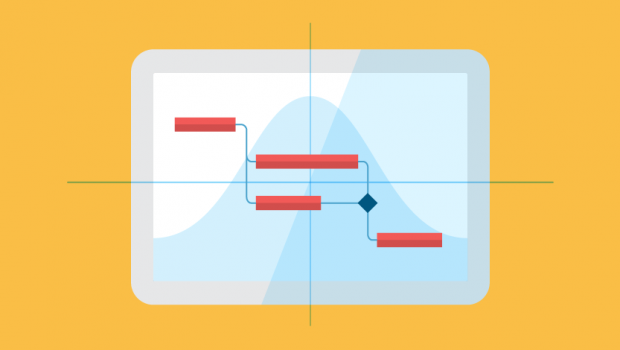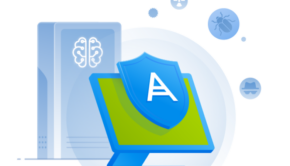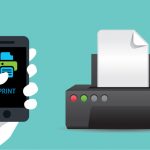Here’s What Every Project Manager Should Know About Gantt Charts
Gantt charts are a fundamental tool in the project management sphere. They provide managers a visual way to measure and manage a project as it progresses. They outline all the tasks and milestones involved in a project, and their order, against a timescale. With Gantt chart, managers (and of course, teams) can immediately see what’s achieved, what should have been achieved, and what’s coming ahead.
Since Gantt charts convey everything visually, they’re pretty easy-to-use. However, they can seem complex and overly confusing if you don’t know the right HOW, WHY, and WHEN for using Gantt chart.
In this particular article, we’ll talk facts about Gantt chart and Gantt chart software that every project manager should know. Spend a few minutes to delve into details and you will reap the benefits of Gantt chart for years to come.
5 Ways Gantt Charts Make Project Managers’ Life Easier
1. Complex information becomes manageable
Gantt charts serve as a big picture that makes critical project information easily scalable. “Who is going to complete what tasks?”, “When they’re going to complete it by?”, “How an individual task impacts the project as a whole?” – Gantt charts convey all such information in a visual manner, making it easier for managers to comprehend detailed project information at a glance.
2. Team productivity is enhanced
Gantt charts boost team productivity because they help individuals stay on top of their task assignments and progress information while allowing other team members to hold accountability for their own work. Furthermore, it allows teams to better manage their time and improve their performance as a team.
3. More effective resource planning
With Gantt chart, managers are able to see the full scope of multiple projects simultaneously. They can map out both current and future resource capacity and use that information to mindfully allocate people to projects. This helps them to eliminate workplace stress and prevent their resources from becoming overworked.
4. Staying on the same page becomes easy
Gantt charts are a great way to summarize project data for everyone associated with it. Gantt charts collate disparate project information into one tool, allowing managers to easily share information and keep everyone up-to-date with the changes.
5. Project and team requirements are clear
A Gantt chart helps managers better understand the project and team requirements by visualizing tasks across a calendar. It highlights key dependencies, milestones, and potential project risks so that everyone (managers, stakeholders, and teams) know what they’re dealing with and what they’re responsible for.
Wait! Is there any limitation to using a Gantt chart? Gantt charts have many benefits to project management, but they are limited. The point is that Gantt charts are not designed to be a cure-all solution for all the problems that an organization or team faces during project management. There are indeed times when Gantt chart loses its effectiveness as compared to other productivity tools available in the market – particularly in scenarios when manages and teams rely too heavily upon the Gantt chart and see it as immutable. Other limitations include the inability of the Gantt chart to deal with project triple constraints (time, cost, and scope). Overall, any time there is a complex project, the Gantt chart will showcase some major limitations.
Considerations For Choosing An Automated Gantt Chart Tool
If you’re interested in using Gantt chart for project management, you should consider investing in an automated Gantt chart tool or already using one. And as you probably already know, you have a lot of options.
From giants like MS Project and Smartsheet to their modern and affordable alternatives like ProofHub and GanttPRO – there are tools that can be used on a daily basis in both professional and personal sphere. Guess what? You can even build a Gantt chart using a spreadsheet tool like Excel or Google Sheets, though it requires a little more time and effort.
So the questions that really matter are: What kind of Gantt chart software do you currently use (if any) and how do you plan to invest in Gantt chart in the future?
In an analysis of PM software buyers, a good amount of respondents say they would make the switch to a free, standalone tool for Gantt chart. However, nearly 90 percent plan to invest in a project management software solution with Gantt chart capabilities, for better integration and workflow.
There is no one-size-fits-all kind of tool. Every organization has different needs and it searches for the kind of tool that fills them. To be honest, the chances of finding a Gantt chart solution that fills all your project planning needs are pretty low. However, if you’ve come across a tool that provides all five benefits (as noted above), then be sure to give it a try. In addition to this, here is a small checklist that will help you narrow your search and spot the right tool.
Find a Gantt chart tool that:
- Is robust enough to meet the needs of any organization – small or big.
- Allows you to change the date of the task simply by drag and drop.
- Lets you associate a milestone to your project plan.
- Gives you quick insights into progress made in tasks by team members.
- Gives you the capability to have dependencies on your project.
- Automatically adjust schedules when project plans change.
- Allows task-level collaboration to keep the whole team on the same page as the project moves forward.
- Integrates well with other tools.
In conclusion, let’s answer an important question: Is Gantt chart really worth it?
It doesn’t matter what you may have thought of using a Gantt chart in the past. Once you find the right tool, you’ll see how easy it can be to plan, manage and deliver your projects.
Do you find Gantt charts helpful? What are some of your favorite ways to make project management easier? Tell us in the comments!
















